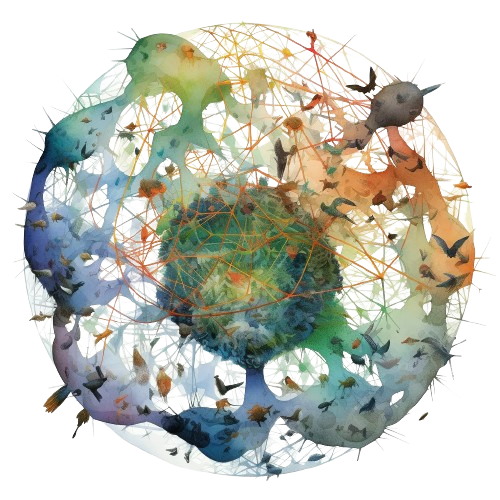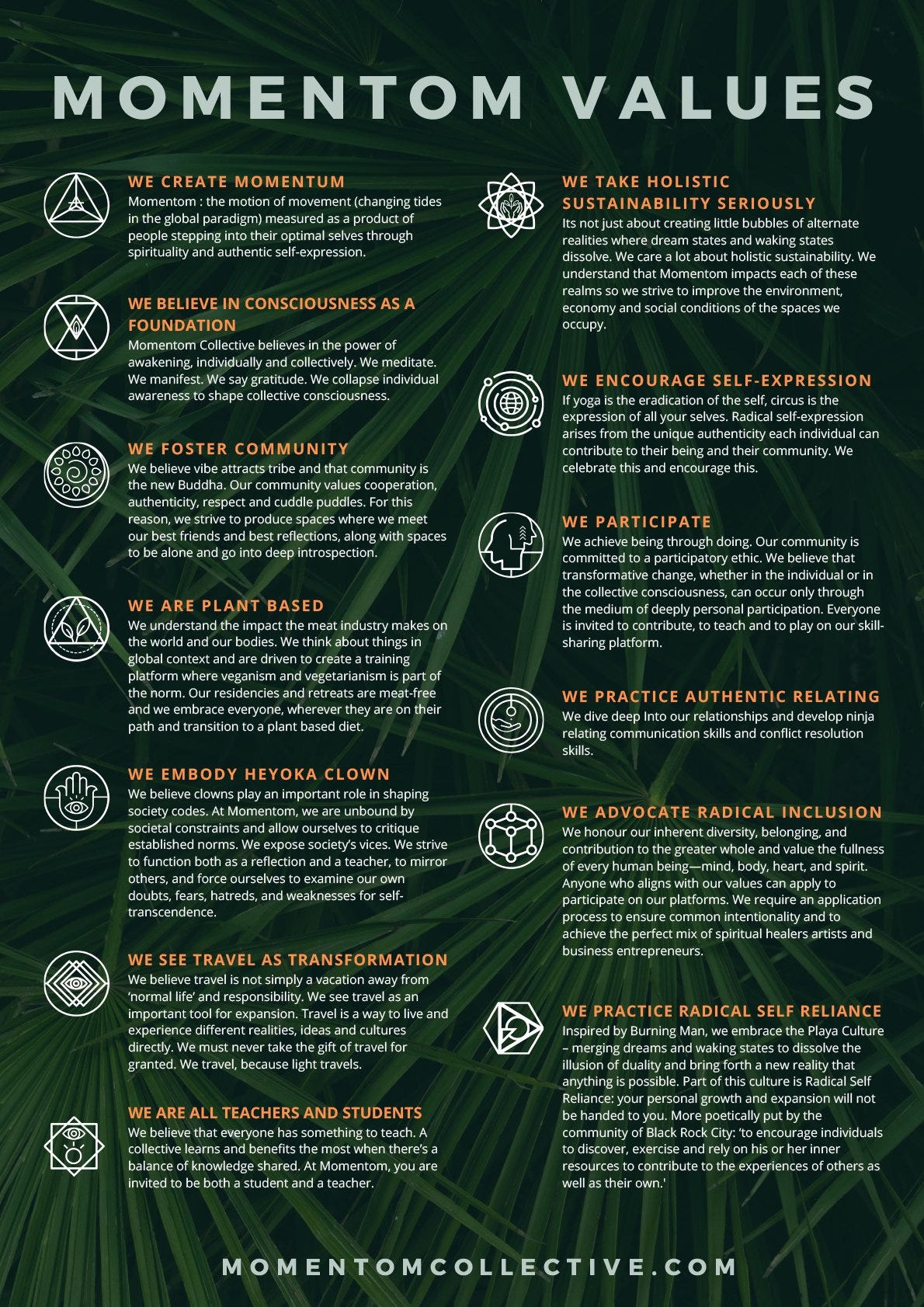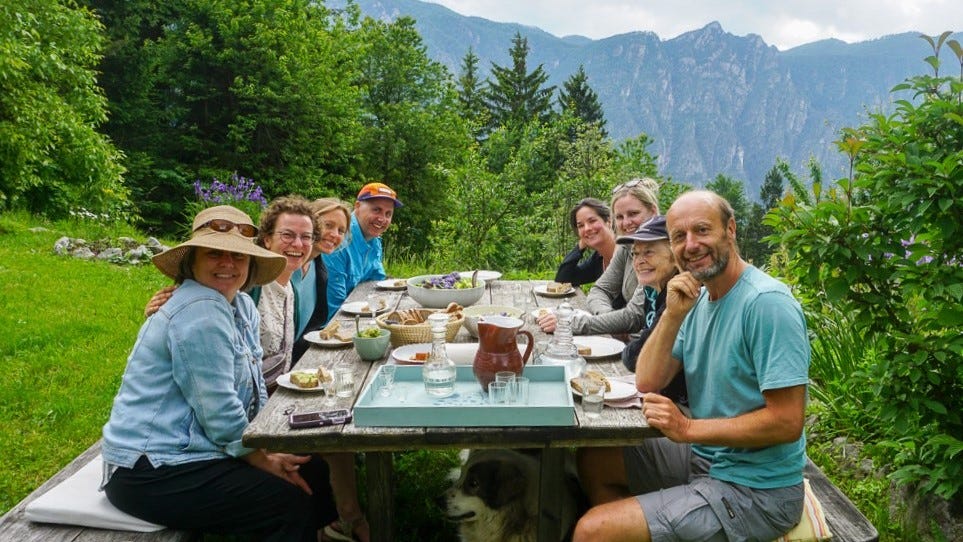Deep Dive - Hone Your Community Vision pt. 1 (Mission)
Create your community manifesto and vision document
This is a taste of what a Deep Dive looks like.
I keep this available to everyone as a free example of what is offered when you directly support my research and resource development.
Many of the templates I either develop myself, or I curate in my personal drive of resources.
Through Terrenity and with my work at Regen Tribe, we’ve put immense amount of thought into crafting a framework that can guide your journey as a community builder.
We call this guide Community Alchemy.

It is an open-source (aka free) guide that synthesizes existing community creation guides, links to a variety of other resources/frameworks, and has multiple contributing authors. We’ve created it based off our direct consulting work with regenerative communities.
It is currently in draft mode in a google doc (at the time of writing this, it has 106 pages), and getting better all the time.
Each step is comprised of multiple considerations to make, but here we will only go over the (first half) of the first step.
Step 1 Hone Your Community Vision
Part. 1 Mission
This is our foundation. Before we can make decisions, we need to clarify the dream, the ethos, and the long-term aspirations.
When forming an organization, it is normal to develop the mission statement first, then elaborate the long-term goals and implementation of that mission through the vision.
As Diana Leafe Christian puts it, “a community’s ideals usually arise from something that its members see as lacking or missing from the wider culture”. Understanding what you want to bring forth and what the core concept of your community is the essential first step.
Why it is essential to clarify your mission and vision:
There are countless real-life scenarios where not clarifying the project mission sabotaged the community later. Instead of covering anecdotes, let me summarize the scenario types:
Conflicting beliefs about why the community exists, which trickles into differing opinions about what the priorities should be, how to make decisions, where resources should go, etc.
Misunderstanding about who the community is (and is not) for, which leads to trying to meet multiple sets of needs in ways that the community is likely not prepared for or even capable.
Lack of awareness around fellow community member’s needs, desires, expectations, and goals for their community life. Lack of clarity in vision leaves things open to a wide range of interpretation and projection.
When the community inevitably changes and evolves over time, lack of preparation and stipulations for potential scenarios will cause strife. It’s like not having an earthquake evacuation plan and figuring it out in the middle of the emergency.

Pre-Foundation Work
These are guiding questions to answer before you start crafting your mission. They help you examine where you are now to understand your community vision.
Dream origin — Understand where your desire to build community comes from
Answer these questions:
❓ Where are you on your community journey? How did you get here?
❓ What brought you to the idea of making this space? How did you find this path? What was your ‘aha’ moment?
❓ What do you feel your personal life mission is, and how do you see your own role in the community?
Existing Counterparts/Market Research
Which existing projects are similar to what you want to create that you can draw inspiration and models of success from? Identify communities you like and potentially want to replicate.
What do you like about them?
What do you want to do differently?
If you need inspiration, read one of my latest articles titled My Top 10 Favorite Regenerative Villages
Ethos — The values of your community
Or some village designers from re:build like to put it, the MythOS — the mythological operating system of your village. What beliefs represent the essence of the community?
You’ll discover in the Community Culture Canvas further below that values might be confused for behaviors, norms, or priorities. Treat these values as your philosophical pillars.
One fun way to display your values is to create a visual manifesto. Here are some examples of visual manifestos:

Mission Statement
Having explored the Pre-Foundation Work and the Ethos, it is time to create your mission statement.
Your Big Why
We separate mission from vision because the mission is what you stand for, the problem you are solving, and what your goals are, while the vision is how you intend to translate that mission into action and what the physical community will look like.
Here are example mission statements from real communities:
Cosmic Sol
“Cosmic Sol’s ongoing mission is to grow food using regenerative and self-sufficient methods for the good of the planet and for the good of the people. Cosmic Sol is a sanctuary for healing and self-expression using arts, naturopathy, and play.”
Meadowdance Community
“We are an egalitarian, child-centered community that welcomes human diversity, ecological sensibility, mutual learning, and joy.”
Traditional Dream Factory
“Traditional Dream Factory is a web3-powered regenerative co-living space in Abela, Portugal. We are pioneering a model for regenerative co-living while creating positive loops in all interactions between stakeholders including nature, all life, and future generations.”
Mission Document — Questions to answer
Motivations and Unique Service Proposal
Why are you building community?
Who are you building community for?
Who will be impacted by your community?
What problems does your community aim to provide solutions to?
What motivates you to build community?
What kind of community do you envision in 5, 10, and 50+ years? What is the legacy you want to leave beyond your lifetime?
All of these questions are laid out in this mission document template
Mission Document Examples:
Traditional Dream Factory’s Pink Paper
Common Ground Statement of Intentions
Coho Village Vision & Values
Dancing Rabbit Vision
Mission Design Resources:
Future Sense Community Visioning Guide
Vision Document Assessment Questions from “Creating a Life Together” by Diana Leafe Christian
Maitri House Intentional Community Capture Sheet
IC.org Short Guide to Community Mission & Vision
Your Community Culture
This is comprehensive visual manifesto that I adapted from
‘s work in fearless culture design to the process of intentional community building.It covers the fundamental sources of culture in your community. When you do this exercise, you might find that values you added to your values manifesto above are actually behaviors or norms. Separating the fibers of philosophical mesh brings clarity to exactly what you stand for and how you uphold that.
Fill out your Community Culture Canvas by opening this Miro and making a copy, or simply drawing the sections on a large piece of paper. You can also find in-depth written instructions for how to use the canvas here and here.
You can access an alternative “Minimum Viable Community Canvas” here
Additional Tools
Literature to Inspire your Community Philosophy:
Some of the foundational texts that represent the philosophy of the regenerative movement:
Suggested courses:
Starting an Intentional Community course by IC.org
Intentional Community Basics course by IC.org
Ecovillage Design Education Certification by Global Ecovillage Network
Question Corner
An example of how I will answer your questions as a paid subscriber:
I’ve always thought that I’ll formalize [the vision] more once I have a team of 6-8 that is well enough aligned to hold the collective vision. But maybe I could go ahead and have mine worked up, ready to merge with whoever comes along? — Jacob from
Nicole:
The funny thing is that village building can be very non-linear. You can create documents that attract people aligned with the vision and make them say “wow, this is exactly what I’ve been looking for!”, or work with others to co-create the vision, which makes them more invested and not feel like “this is just Jacob’s dream, why should I care”.
I suggest the middle road for you. You don’t have to design the whole community or write a constitution. Just answer the question: what is my personal vision for community? Write up at least some basic thoughts of who you want as neighbors and what you want to be able to rely on them for.
You mentioned having a team that is “well enough aligned”. The giant juicy question hidden in that description is how do you know that team members are aligned and what do you use to measure alignment?
If not with your pre-developed vision, then aligned in how likeable they are? Aligned in how similar they are to you on the surface? Aligned in that there are no apparent conflicts (yet)?
This is part of the process of creating vision documentation. You establish the ethos that allows you to match with others to see if they are “truly aligned”.
The village development process is full of chicken-or-eggs. I think the important thing is taking consistent steps towards making the dream tangible.
So whether that is writing out informal documents, drawing up concept art, studying how to maintenance offgrid systems, configuring costs for your own private compound...there is no definite order, but if you hone your vision and create documentation that communicates that vision clearly, your chances improve of quickly attracting and speaking to people who want the same.
Summary
Being profoundly intimate with your vision will help you articulate your vision to others and get them as excited about it as you are, which is Step 2 - Recruit Your Ideal Members.
NEXT DEEP DIVE Hone Your Vision PT. 2 - Vision.
One of my affiliated partners, Community Finders, run by Cynthia Tina, offers services for people seeking ecovillages or building ecovillages. I highly recommend you join one of her courses to uplevel your ecovillage journey.
Use the code TERRENITY for $100 off your ecovillage tour.










Thank you! 🙌💚 I'm looking forward to trying out some of these tools soon.